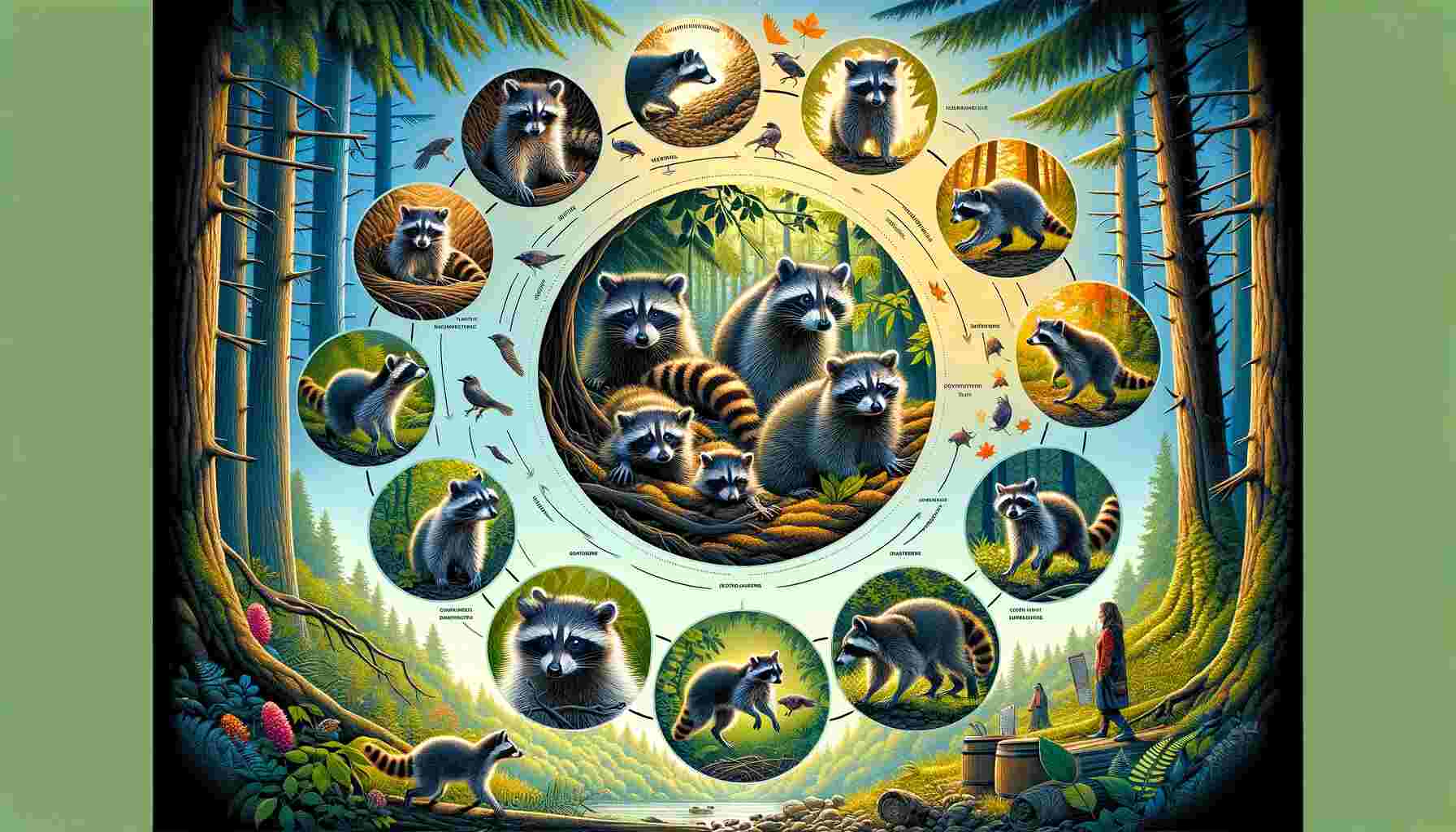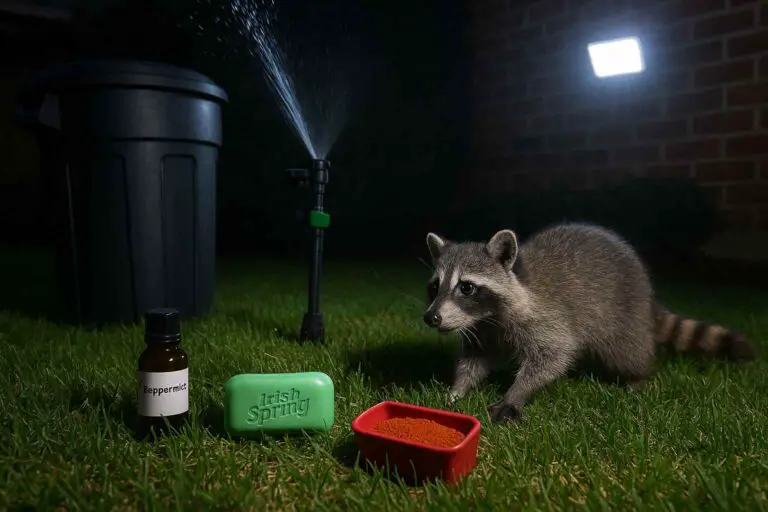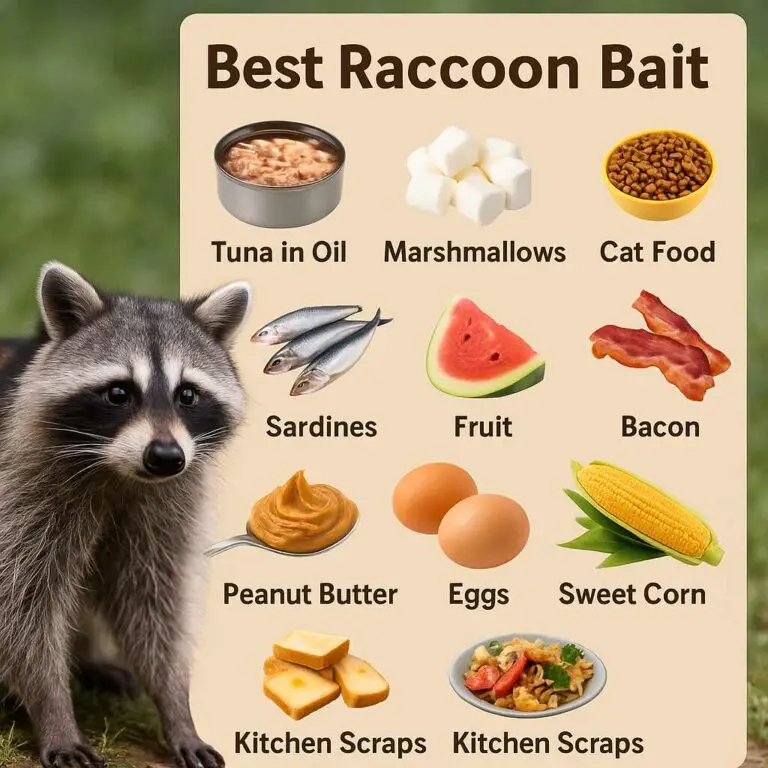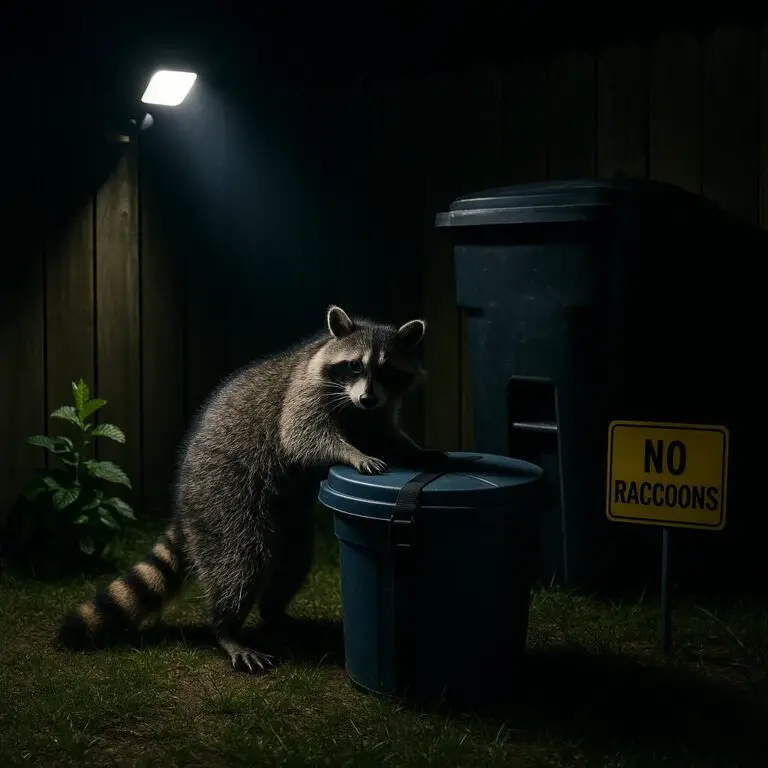Raccoons (Procyon lotor) are fascinating creatures with complex life cycles that are essential to understand for those interested in wildlife, ecology, or simply curious about these masked mammals. This comprehensive guide will delve into the detailed stages of a raccoon’s life and their development milestones, providing accurate and relevant information to address user queries thoroughly.
Introduction to Raccoons
Raccoons are medium-sized mammals native to North America. Recognizable by their distinctive black facial mask and ringed tail, they are highly adaptable animals often found in urban and rural areas. Their life cycle, from birth to adulthood, is a journey marked by significant milestones and behaviors that ensure their survival and proliferation.
Birth and Early Development (0-2 Months)
Gestation and Birth: Raccoons have a gestation period of approximately 63-65 days. Females typically give birth to a litter of 2-5 kits, usually in a secure, hidden location such as a tree hollow, abandoned burrow, or attic in urban areas.
Neonatal Stage:
- First Weeks (0-4 Weeks): At birth, raccoon kits are blind, deaf, and completely dependent on their mother. They weigh about 2.5 ounces (70 grams) and are covered in thin fur. The mother raccoon is solely responsible for their care, providing warmth and milk.
- Developmental Milestones: By the end of the first month, kits begin to open their eyes. Their sense of hearing also starts to develop, and they begin to vocalize to communicate with their mother and siblings.
Early Growth:
- 1-2 Months: During this period, kits grow rapidly, gaining weight and strength. They start to crawl and explore their immediate surroundings within the den. Their diet remains solely mother’s milk, which is rich in nutrients necessary for their development.
Juvenile Stage (2-6 Months)
Exploration and Learning:
- 2-3 Months: Kits begin to venture outside the den under the supervision of their mother. They start to learn essential survival skills such as climbing, foraging, and recognizing threats.
- Introduction to Solid Food: Around the third month, kits are introduced to solid food, gradually weaning off their mother’s milk. They start to eat a varied diet that includes fruits, nuts, insects, and small animals.
Social Learning:
- 4-6 Months: This stage is critical for social learning. Kits observe and mimic their mother’s behaviors, learning important skills like hunting, den selection, and social interactions within the raccoon community.
Adolescence (6-12 Months)
Increasing Independence:
- 6-8 Months: Adolescent raccoons become more independent, spending increasing amounts of time away from their mother. They start to establish their own territories and refine their foraging and hunting skills.
- Physical Development: They continue to grow in size and strength, reaching nearly full adult dimensions. Their distinctive black mask and ringed tail become more pronounced.
Survival Skills:
- 9-12 Months: By this time, young raccoons are nearly fully independent. They are capable of surviving on their own, having developed the necessary skills to find food, shelter, and avoid predators. This period is marked by exploration and honing survival instincts.
Adulthood (1-3 Years)
Sexual Maturity:
- 1 Year: Raccoons reach sexual maturity at around one year of age. Mating season typically occurs in late winter to early spring. Males become more territorial and may travel significant distances in search of a mate.
- Reproduction: Female raccoons exhibit strong maternal instincts and are solely responsible for raising their young. After mating, the cycle begins anew with the gestation and birth of a new litter.
Adult Life:
- 1-3 Years: Adult raccoons are solitary animals, although they may form loose associations with other raccoons in high-density areas. They are highly adaptable, capable of thriving in diverse environments, from forests to urban areas. Their diet is omnivorous, consisting of a wide range of food sources, including fruits, vegetables, insects, small animals, and human leftovers.
Lifespan and Longevity:
- Average Lifespan: In the wild, raccoons typically live for 2-3 years, although some can live up to 5 years. In captivity, with fewer threats and consistent food supply, raccoons can live up to 20 years.
- Threats: Predators, disease, and human-related dangers are significant threats to raccoons. Common predators include coyotes, bobcats, and owls. Diseases like rabies and canine distemper can also impact raccoon populations.
Behavioral Adaptations
Foraging and Feeding:
- Raccoons are known for their dexterous front paws, which they use to manipulate food and open containers. They are nocturnal foragers, often seen searching for food at night.
Denning Habits:
- Raccoons use a variety of locations for dens, including tree cavities, rock crevices, abandoned burrows, and urban structures. They often have multiple dens within their territory for safety and convenience.
Communication:
- Raccoons communicate through vocalizations, body language, and scent marking. They have a range of sounds for different situations, including purrs, growls, and screams.
Studies and Statistics
- Population Density Studies: Research indicates that raccoon populations are densest in urban areas due to the availability of food and shelter. A study conducted in Chicago found that urban raccoon densities can be 10-15 times higher than in rural areas.
- Survival Rates: Studies show that juvenile raccoons have a high mortality rate, with up to 50% not surviving their first year. Predation and accidents are significant causes of juvenile mortality.
- Disease Impact: According to the Centers for Disease Control and Prevention (CDC), raccoons are one of the primary carriers of rabies in the United States. Vaccination programs have been implemented in many areas to control the spread of this disease.
Conclusion
Understanding the life cycle of a raccoon from birth to adulthood provides valuable insights into their behavior, survival strategies, and interactions with the environment. These adaptable mammals continue to thrive despite numerous challenges, making them a remarkable species to study and appreciate.
Resources for Further Reading
- Books:
- Websites:
- Amazon Affiliate Links:
Final Thoughts
Raccoons, with their distinctive appearance and clever behaviors, are more than just urban nuisances. They play a vital role in the ecosystem, helping to control insect populations and clean up waste.








